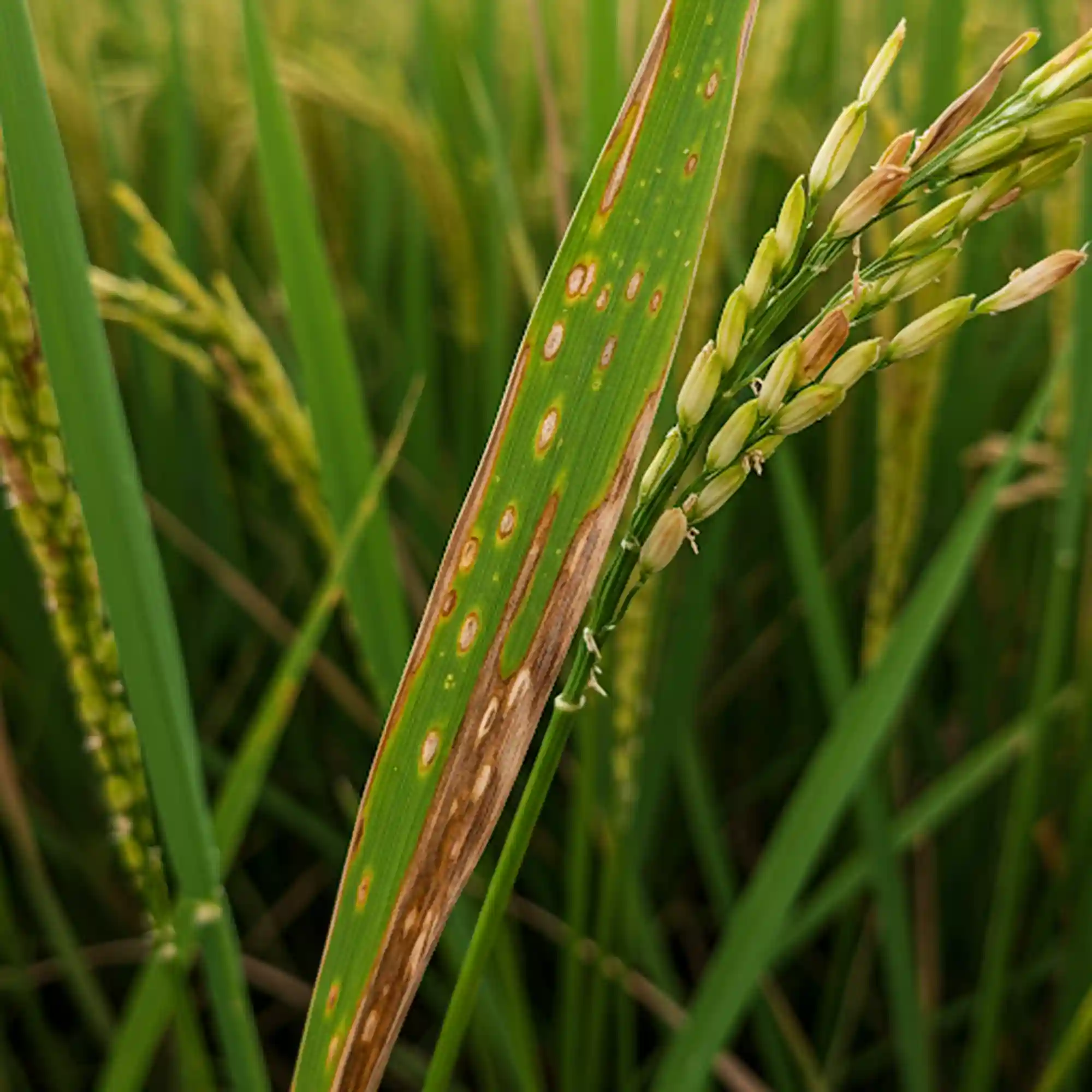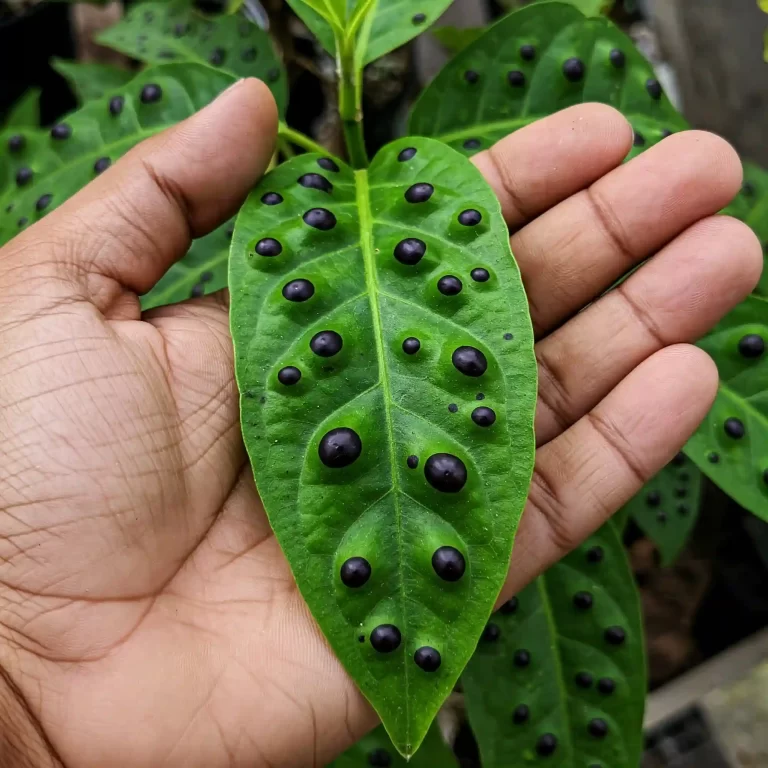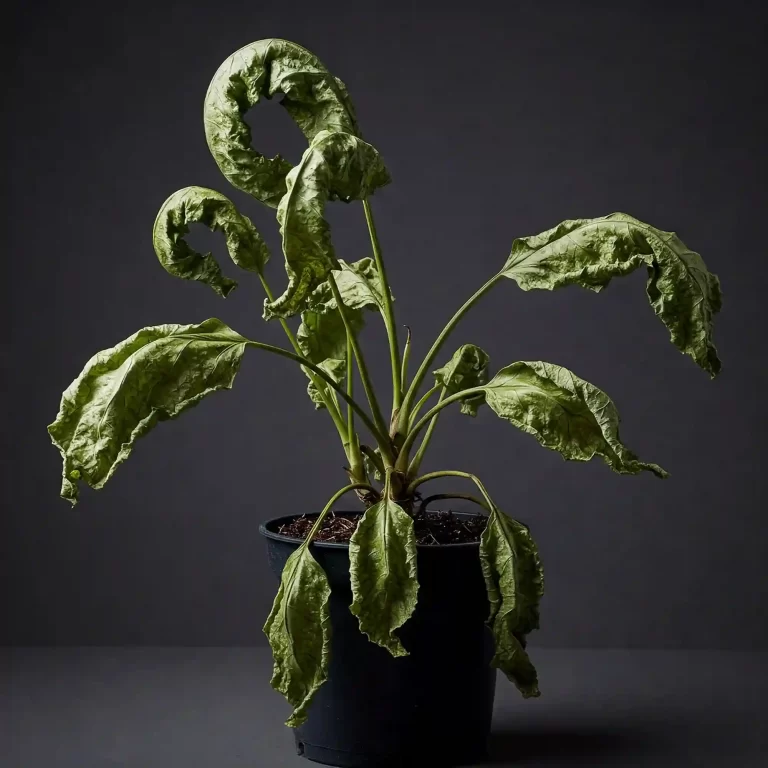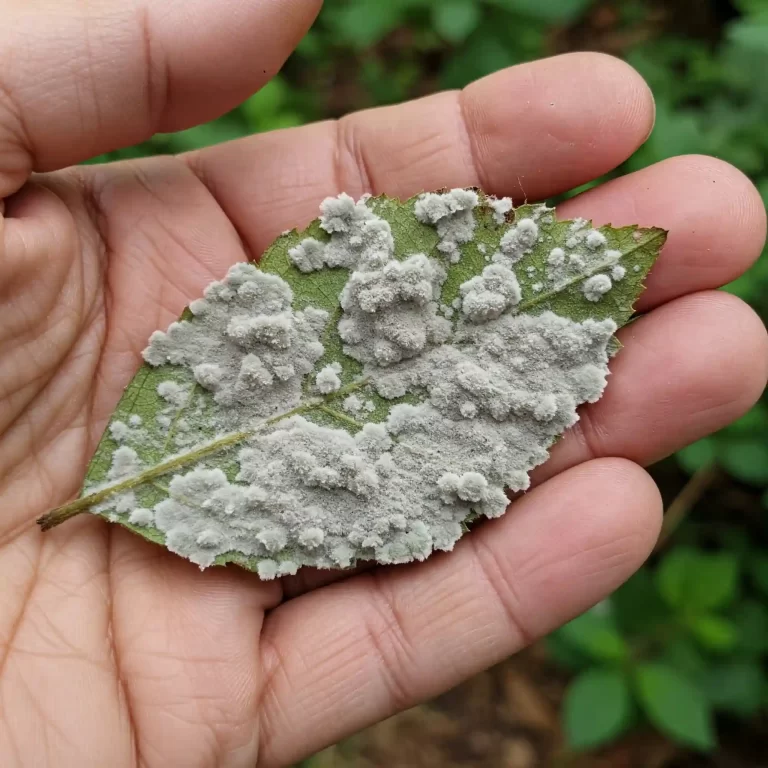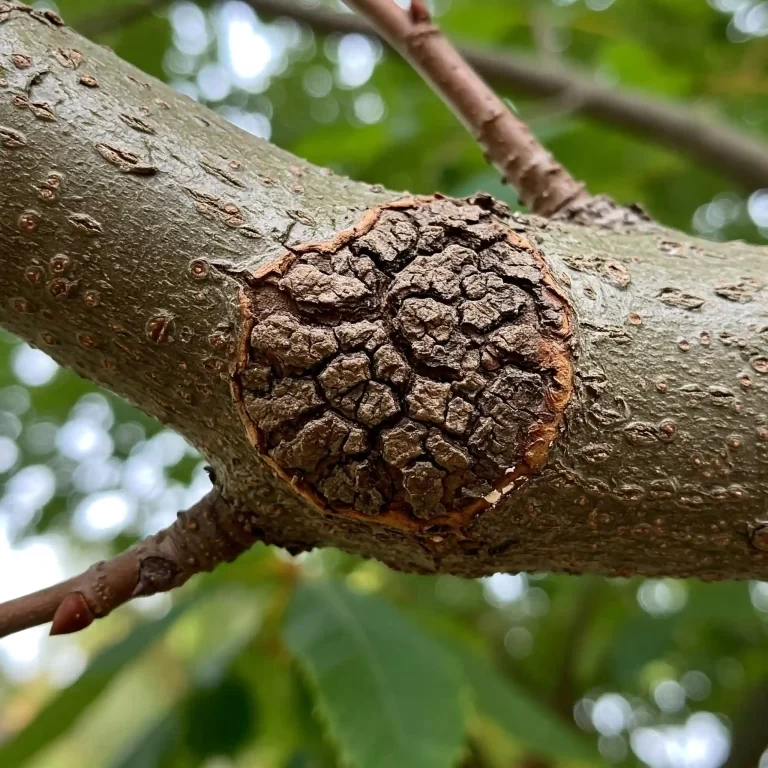Have you ever walked through your fields or garden, anticipating a bountiful harvest, only to be met with the disheartening sight of wilting, rotting plants? It’s a devastating experience, especially when you’ve invested time, effort, and resources into your crops. This problem is compounded when the culprit is a disease like basal glume rot, a persistent and yield-reducing affliction that can devastate cereal crops. I’ve seen firsthand the damage this disease can inflict, and I understand the frustration and concern it brings. But there’s hope. In this guide, I’ll share seven proven strategies to protect your crops from basal glume rot, empowering you to take control and ensure a successful harvest.
What is Basal Glume Rot?
Basal glume rot is a plant disease primarily affecting the glumes (the protective outer coverings of developing grains) and leaf sheaths at the base of cereal plants. This disease can lead to significant yield loss, and in severe cases, it can even result in seedling death. I’ve personally witnessed entire sections of fields affected by this disease, highlighting the importance of understanding and managing it.
The term “basal” refers to the base or bottom of the plant, indicating where the infection typically begins. “Glume” is a botanical term for the bracts or scales that enclose the flowers of grasses and cereals, including rice, wheat, and barley. “Rot” describes the decomposition of plant tissue caused by the pathogens.
Basal glume rot isn’t caused by a single pathogen but rather a complex of fungi and bacteria. Among the fungal culprits, Fusarium and Rhizoctonia species are often implicated. These soilborne fungi can persist in the soil for extended periods, making them a recurring threat. Bacterial pathogens, such as certain Pseudomonas species, can also contribute to the disease, particularly under conditions of high humidity and excessive moisture. This interaction between multiple pathogens and environmental factors makes managing basal glume rot a complex challenge.
From my experience, the disease’s impact extends beyond just the glumes. The infection can spread to the leaf sheaths, stems, and even the crown of the plant, disrupting nutrient and water transport and ultimately weakening or killing the plant. The severity of the disease can vary depending on several factors, including the specific pathogens involved, environmental conditions, and the susceptibility of the plant variety.
Key Characteristics of Basal Glume Rot:
- Affects the base of the plant, specifically the glumes and leaf sheaths.
- Caused by a complex of fungal and bacterial pathogens.
- Can lead to significant yield loss and seedling death.
- Favored by warm, humid conditions and excessive moisture.
I remember one particularly wet season where basal glume rot spread rapidly through a local rice farm. The heavy rains created ideal conditions for the pathogens to thrive, and the lack of proper drainage exacerbated the problem. The farmers experienced substantial losses, reinforcing the importance of preventative measures and effective management strategies. Understanding what basal glume rot is, its causes, and how it manifests is the cornerstone of protecting your crops.
Identifying Basal Glume Rot: Spotting the Signs
Recognizing the symptoms of basal glume rot early is crucial for effective management. From my experience, early detection can make a significant difference in minimizing crop losses. Here’s what to look for:
- Lesions: The most characteristic symptom is the appearance of lesions on the glumes, leaf sheaths, and lower stems. These lesions often start as small, discolored spots that gradually enlarge and darken. The color can range from brown or black to a grayish hue, depending on the specific pathogen involved.
- Rotting: As the disease progresses, the affected tissues begin to rot. This rotting is characterized by a softening of the plant tissue, a water-soaked appearance, and in some cases, a foul odor. I’ve noticed that in severe infections, the entire base of the plant can become mushy and decayed.
- Discoloration: Along with the lesions and rotting, you’ll often observe significant discoloration at the base of the plant. This discoloration can extend up the stem and into the lower leaves, further indicating the severity of the infection.
- Wilting and Stunting: Infected plants often exhibit wilting, even when there’s adequate soil moisture. This wilting occurs because the rot disrupts the plant’s vascular system, hindering its ability to transport water and nutrients. Stunted growth is another common symptom, as the disease weakens the plant and impairs its development.
- Pre- and Post-Emergence Damping-Off: In seedlings, basal glume rot can cause damping-off, a condition where seedlings either fail to emerge from the soil (pre-emergence damping-off) or collapse and die shortly after emerging (post-emergence damping-off). This can result in significant stand loss, especially in densely sown crops.
Distinguishing Basal Glume Rot from Other Diseases:
It’s important to distinguish basal glume rot from other diseases that may present similar symptoms. For instance, sheath blight, another common rice disease, can also cause lesions on the leaf sheaths. However, sheath blight lesions are typically more elongated and have a characteristic “eye-spot” appearance. Similarly, stem rot can also cause rotting at the base of the plant, but it usually affects the entire stem rather than just the glumes and leaf sheaths. By carefully observing the specific symptoms, you can accurately diagnose basal glume rot and implement the appropriate management strategies.
I recall a situation where a farmer misdiagnosed basal glume rot as a nutrient deficiency due to the stunting of the plants. This misdiagnosis led to a delay in implementing proper disease management strategies, resulting in further crop losses. This experience highlights the importance of accurate identification and understanding the specific symptoms of basal glume rot.
Understanding the Causes of Basal Glume Rot
Understanding the underlying causes of basal glume rot is paramount to implementing effective prevention and control measures. This disease isn’t a spontaneous occurrence; it arises from a complex interplay of factors, primarily involving specific pathogens and conducive environmental conditions. Through my years of experience, I’ve learned that addressing these root causes is far more effective than simply treating the symptoms.
The Pathogen Complex:
Basal glume rot is not typically caused by a single pathogen but rather a complex of fungal and bacterial organisms. This means multiple species can contribute to the disease, making it more challenging to manage. Among the fungal pathogens, Fusarium and Rhizoctonia species are frequently identified as key players. These fungi are soilborne, meaning they reside in the soil and can persist for extended periods, even in the absence of a host crop. This persistence makes crop rotation and soil management crucial aspects of disease control.
Bacterial pathogens, particularly certain Pseudomonas species, also contribute to basal glume rot, often working in conjunction with the fungi. These bacteria thrive in moist environments and can spread rapidly through water splash or contaminated tools. The combined action of these fungal and bacterial pathogens creates a synergistic effect, exacerbating the disease’s severity.
Environmental Factors:
While the presence of pathogens is necessary for the disease to occur, certain environmental conditions significantly influence its development and spread. I’ve observed that basal glume rot is particularly prevalent during periods of:
- High Humidity: High humidity creates an ideal environment for both fungal and bacterial pathogens to thrive. The moisture allows spores to germinate and bacteria to multiply rapidly.
- Excessive Moisture: Excessive moisture, whether from heavy rainfall, poor drainage, or over-irrigation, is a major contributing factor. Waterlogged soil creates anaerobic conditions that weaken plants and make them more susceptible to infection. Water splash can also spread bacterial pathogens from infected plants to healthy ones.
- Warm Temperatures: Warm temperatures further accelerate the growth and reproduction of the pathogens, leading to more rapid disease development.
Sources of Inoculum:
The pathogens responsible for basal glume rot can survive and persist in various ways, creating sources of inoculum that can initiate new infections:
- Infected Seed: Pathogens can reside on or within infected seeds, introducing the disease to new fields or gardens. Using disease-free seed is, therefore, a critical preventative measure.
- Plant Debris: Infected plant debris left in the field after harvest can harbor pathogens, allowing them to overwinter and infect subsequent crops. Proper sanitation practices, such as removing and destroying crop residues, are essential for reducing inoculum levels.
- Soil: As mentioned earlier, many of the fungal pathogens are soilborne, meaning they can survive in the soil for long periods. This makes soil management practices, such as crop rotation and improving soil drainage, crucial for long-term disease control.
The Disease Cycle:
Understanding the disease cycle of basal glume rot can help you implement more targeted management strategies. The cycle typically involves the following stages:
- Inoculum: The pathogens survive in infected seed, plant debris, or soil.
- Infection: Pathogens infect the plant through wounds or natural openings, particularly at the base of the plant.
- Colonization: The pathogens colonize the plant tissue, causing lesions, rotting, and other symptoms.
- Spread: Pathogens can spread to other plants through water splash, wind, or contaminated tools.
- Overwintering: Pathogens survive in infected plant debris or soil during the off-season, ready to initiate new infections in the following season.
By understanding these causes and the disease cycle, you can implement more effective strategies to prevent and manage basal glume rot in your crops. This knowledge empowers you to take proactive steps to protect your plants and ensure a healthy and productive harvest.
7 Proven Strategies for Basal Glume Rot Management and Care
Effective management of basal glume rot requires a comprehensive approach that integrates various strategies. Relying on a single method is often insufficient, as the disease is influenced by multiple factors. Through my years of gardening, I’ve found that a combination of preventative and curative measures provides the best results. Here are seven proven strategies that I recommend:
1. Resistant Varieties:
Planting resistant varieties is the most effective long-term strategy for managing basal glume rot. These varieties have been specifically bred to exhibit resistance or tolerance to the pathogens that cause the disease. While they may not be completely immune, they are less susceptible to infection and typically experience less severe symptoms.
When selecting resistant varieties, it’s essential to consider the specific pathogens prevalent in your region. Different varieties may exhibit resistance to different strains of the pathogens. Consulting with local agricultural extension services or seed suppliers can help you identify the most suitable resistant varieties for your area.
2. Seed Treatment:
Treating seeds with fungicides or bactericides before planting can provide early protection against basal glume rot. This is particularly important in areas with a history of the disease or when planting susceptible varieties. Seed treatments can eradicate pathogens present on the seed surface and provide a protective barrier against soilborne pathogens during germination and early seedling development.
Various seed treatment products are available, including chemical fungicides and biological control agents. When using chemical treatments, it’s crucial to follow label instructions carefully to ensure proper application and minimize environmental impact. Biological control agents, such as beneficial microorganisms, can also be effective in suppressing pathogen growth and promoting plant health.
3. Crop Rotation:
Crop rotation is a valuable cultural practice that can help reduce the buildup of soilborne pathogens. By rotating susceptible crops with non-host crops, you can disrupt the disease cycle and reduce the inoculum levels in the soil. This is because the pathogens responsible for basal glume rot cannot survive or multiply on non-host crops.
The effectiveness of crop rotation depends on the specific crops used in the rotation and the length of the rotation cycle. A longer rotation cycle, typically two to three years, is generally more effective in reducing pathogen populations.
4. Proper Drainage:
Ensuring proper drainage in your fields or garden is crucial for preventing basal glume rot. Excess moisture creates ideal conditions for pathogen growth and spread. Improving drainage can help reduce soil moisture levels and create a less favorable environment for the disease.
Various methods can be used to improve drainage, including:
- Improving soil structure: Adding organic matter to the soil can improve its drainage capacity.
- Creating drainage ditches or channels: These can help divert excess water away from the field or garden.
- Planting on raised beds: This can help elevate the plants above the water table.
5. Sanitation:
Sanitation practices play a vital role in reducing the spread of basal glume rot. Removing and destroying infected plant debris after harvest can help eliminate sources of inoculum and prevent the pathogens from overwintering in the field.
Other sanitation practices include:
- Cleaning tools and equipment: This can help prevent the spread of pathogens from infected plants to healthy ones.
- Controlling weeds: Weeds can serve as alternative hosts for some pathogens, so controlling them can help reduce disease pressure.
6. Fungicide/Bactericide Application:
In some cases, applying fungicides or bactericides may be necessary to control basal glume rot. This is particularly true when other management strategies are insufficient or when the disease pressure is high.
Various fungicide and bactericide products are available, but it’s crucial to select products specifically labeled for use against the pathogens causing basal glume rot. Always follow label instructions carefully when applying these products.
7. Optimize Planting Density:
Optimizing planting density can help improve air circulation within the plant canopy and reduce humidity levels. This can create a less favorable environment for pathogen growth and spread.
Avoid overly dense planting, which can restrict airflow and create a humid microclimate conducive to disease development. Proper spacing between plants can also help reduce the spread of pathogens through water splash.
By implementing these seven strategies, you can effectively manage basal glume rot and protect your crops from this devastating disease. Remember, a comprehensive approach that integrates multiple methods is often the most successful.
Preventing Basal Glume Rot: Proactive Plant Protection
Prevention, as they say, is better than cure. This adage holds particularly true when it comes to plant diseases like basal glume rot. While management strategies can help control the disease once it’s present, preventing it from occurring in the first place is always the most effective approach. From my years of experience, I’ve learned that a proactive approach to plant health pays dividends in the long run. Here are some key preventative measures you can take:
1. Use Disease-Free Seed:
One of the most crucial steps in preventing basal glume rot is to start with disease-free seed. Pathogens can reside on or within infected seeds, acting as a primary source of inoculum for new infections. Using certified disease-free seed can significantly reduce the risk of introducing the disease to your fields or garden.
When sourcing seeds, choose reputable suppliers who adhere to strict quality control standards. Look for seed that has been tested and certified to be free from pathogens. If you’re saving seed from your own crops, be sure to inspect it carefully for any signs of disease. Discard any seed that shows discoloration, lesions, or other abnormalities.
2. Maintain Soil Health:
Healthy soil is the foundation of healthy plants. Soil that is well-drained, rich in organic matter, and has a balanced nutrient content can help plants resist disease. Conversely, compacted, poorly drained soil can create conditions that favor pathogen growth and make plants more susceptible to infection.
Here are some practices to maintain soil health:
- Improve Drainage: As discussed earlier, good drainage is essential for preventing basal glume rot. Improve soil structure by adding organic matter, creating drainage ditches, or planting on raised beds.
- Provide Balanced Nutrition: Ensure your plants receive adequate nutrients by conducting soil tests and applying appropriate fertilizers. Avoid excessive nitrogen fertilization, which can make plants more susceptible to disease.
- Promote Beneficial Microorganisms: Encourage the growth of beneficial microorganisms in the soil by adding compost, compost tea, or other organic amendments. These microorganisms can help suppress pathogen growth and promote plant health.
3. Monitor Weather Conditions:
Basal glume rot is favored by specific weather conditions, particularly high humidity and excessive moisture. Monitoring weather forecasts can help you anticipate periods of increased disease risk.
During periods of high humidity and rainfall, take extra precautions to protect your plants. This may include:
- Improving air circulation: Prune plants to improve airflow within the canopy.
- Avoiding overhead irrigation: This can help reduce leaf wetness and prevent the spread of pathogens.
- Applying preventative fungicides or bactericides: In some cases, preventative applications may be warranted during periods of high disease risk.
4. Regular Scouting:
Regularly inspecting your plants for early signs of infection is crucial for early detection and timely intervention. The earlier you detect the disease, the more effectively you can manage it.
When scouting your plants, pay close attention to the base of the plant, particularly the glumes, leaf sheaths, and lower stems. Look for any signs of lesions, rotting, or discoloration. If you detect any suspicious symptoms, take action immediately to prevent the disease from spreading.
By implementing these preventative measures, you can significantly reduce the risk of basal glume rot in your crops and promote healthy, productive growth. Remember, a proactive approach to plant health is the best defense against this and other plant diseases.
Addressing Your Basal Glume Rot Concerns (FAQ)
I’ve compiled a list of frequently asked questions about basal glume rot, drawing from my own experience and the concerns I’ve heard from other gardeners. I hope these answers provide further clarity and help you in your efforts to protect your crops.
General Questions:
- What types of crops are most susceptible to basal glume rot?
Basal glume rot primarily affects cereal crops like rice, wheat, and barley. However, other grasses and even some turfgrass species can also be susceptible. - How does basal glume rot spread?
The pathogens responsible for basal glume rot can spread through various means, including:- Infected seed
- Plant debris
- Water splash
- Contaminated tools and equipment
- Wind (to a lesser extent)
- Can basal glume rot affect other parts of the plant besides the base?
Yes, while the infection typically starts at the base of the plant, it can spread to other parts, including the leaf sheaths, stems, and even the developing grains.
Questions about Identification:
- How to identify basal glume rot in rice seedlings?
Look for brown lesions at the base of the seedling and wilting. In severe cases, the seedlings may collapse and die. - What does basal glume rot look like on wheat leaves?
On wheat leaves, basal glume rot can cause elongated lesions that start at the base of the leaf and extend upwards. The lesions may be brown or black and may have a water-soaked appearance. - Early signs and symptoms of basal glume rot on wheat?
Early signs include small, discolored spots at the base of the plant, particularly on the leaf sheaths. These spots will gradually enlarge and darken, eventually leading to rotting and wilting.
Questions about Causes:
- What environmental conditions cause basal glume rot in rice?
High humidity, excessive moisture (from heavy rainfall, poor drainage, or over-irrigation), and warm temperatures are the primary environmental factors that contribute to basal glume rot development. - Is basal glume rot caused by a fungus or bacteria?
Basal glume rot can be caused by both fungi and bacteria. Several fungal species, including Fusarium and Rhizoctonia, and bacterial species, such as Pseudomonas, have been implicated in the disease. - How does excessive moisture contribute to basal glume rot?
Excessive moisture creates ideal conditions for pathogen growth and spread. Waterlogged soil weakens plants and makes them more susceptible to infection. Water splash can also spread bacterial pathogens from infected plants to healthy ones.
Questions about Treatment and Control:
- Effective fungicide treatments for controlling basal glume rot?
Fungicides containing active ingredients like azoxystrobin, propiconazole, or trifloxystrobin can be effective in controlling basal glume rot. However, it’s crucial to consult local agricultural extension services or plant pathologists for specific recommendations, as the efficacy of different products may vary depending on the specific pathogens involved and local regulations. - Best cultural practices for managing basal glume rot in fields?
Several cultural practices can help manage basal glume rot, including:- Crop rotation
- Proper drainage
- Sanitation (removing and destroying infected plant debris)
- Optimizing planting density
- Using disease-free seed
- How to prevent the spread of basal glume rot in crops?
Preventing the spread of basal glume rot involves a combination of the preventative measures and management strategies discussed earlier, including using disease-free seed, maintaining soil health, monitoring weather conditions, regular scouting, and implementing appropriate sanitation practices.
Questions about Prevention:
- What are the best preventative measures for basal glume rot?
The best preventative measures include:- Planting resistant varieties
- Using disease-free seed
- Maintaining soil health (including proper drainage)
- Monitoring weather conditions
- Regular scouting
- Does crop rotation help prevent basal glume rot in rice?
Yes, crop rotation can be an effective preventative measure, particularly when rotating with non-host crops. This helps disrupt the disease cycle and reduce pathogen buildup in the soil. - How to improve drainage to prevent basal glume rot in fields?
Several methods can be used to improve drainage, including:- Improving soil structure by adding organic matter
- Creating drainage ditches or channels
- Planting on raised beds
I hope this comprehensive FAQ addresses most of your concerns about basal glume rot. Remember, early detection and a proactive approach are key to successful disease management.
Conclusion: Protecting Your Crops from Basal Glume Rot
While basal glume rot can pose a significant challenge to crop production, understanding the disease and implementing effective management strategies can significantly minimize its impact. Throughout this guide, I’ve shared insights gained from my years of experience, providing you with practical information on identifying, understanding, managing, and preventing this disease.
Remember these key takeaways:
- Accurate identification is crucial: Recognizing the specific symptoms of basal glume rot is the first step in effective management.
- A multi-pronged approach is essential: Integrating various strategies, including resistant varieties, seed treatment, crop rotation, proper drainage, sanitation, and fungicide/bactericide application, provides the best results.
- Prevention is paramount: Implementing preventative measures, such as using disease-free seed, maintaining soil health, monitoring weather conditions, and regular scouting, can significantly reduce the risk of disease occurrence.
- Consistent monitoring and timely intervention are key: Regularly inspect your plants for early signs of infection and take action promptly to prevent the disease from spreading.
By adopting a proactive and informed approach, you can effectively protect your crops from basal glume rot and ensure healthy, productive harvests. Remember, I’m here to support you in your gardening endeavors. If you have any further questions or concerns, don’t hesitate to reach out.
I hope this comprehensive guide has provided you with valuable information on basal glume rot. With careful observation, proactive management, and a bit of patience, you can successfully protect your crops and enjoy the fruits of your labor.
